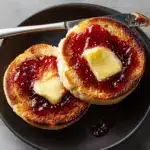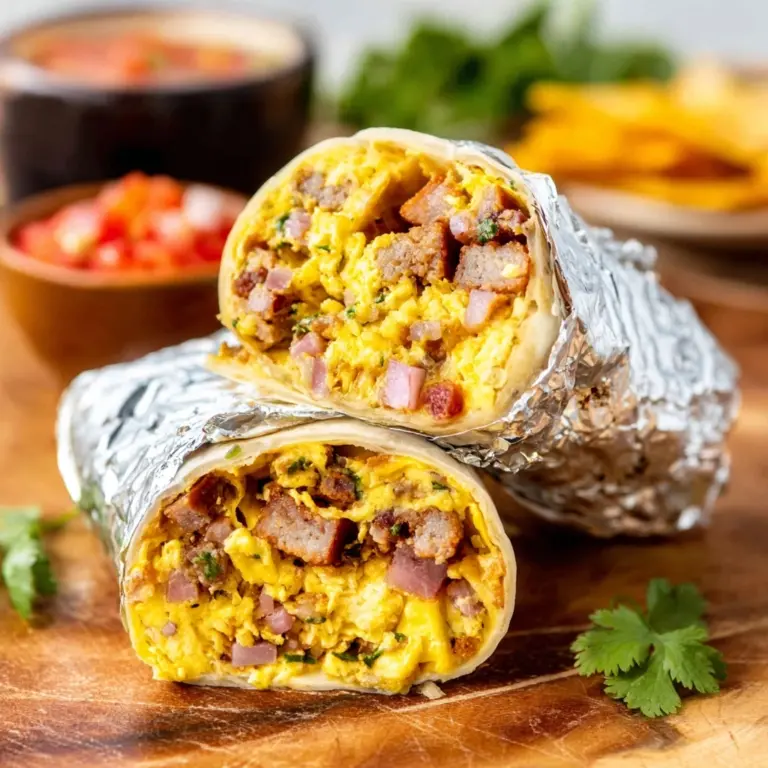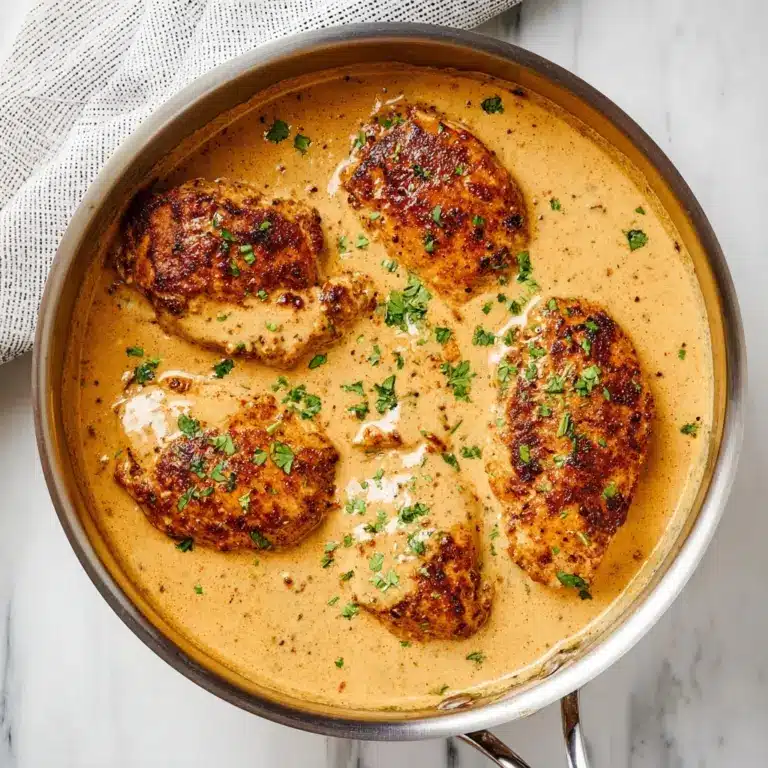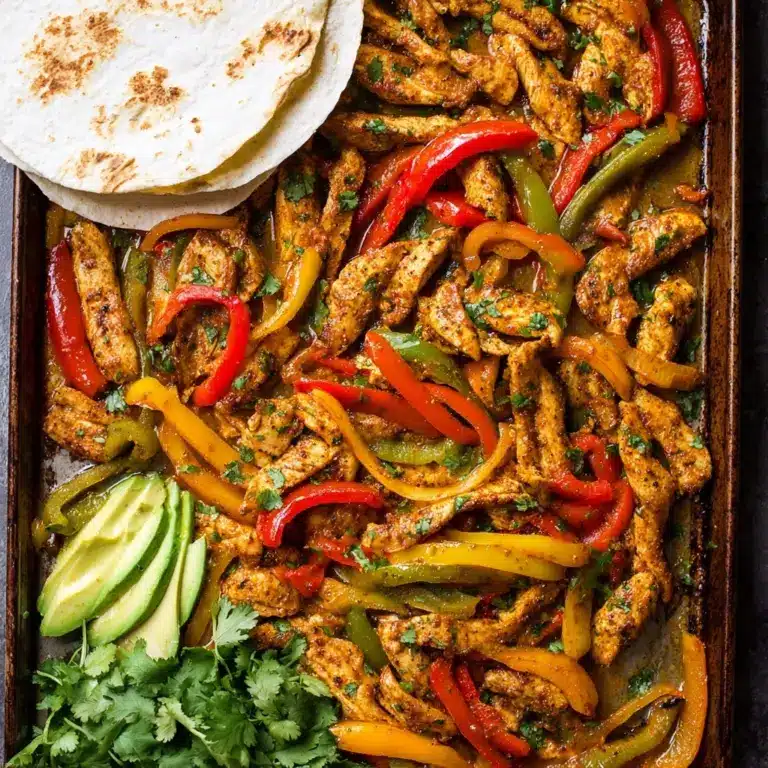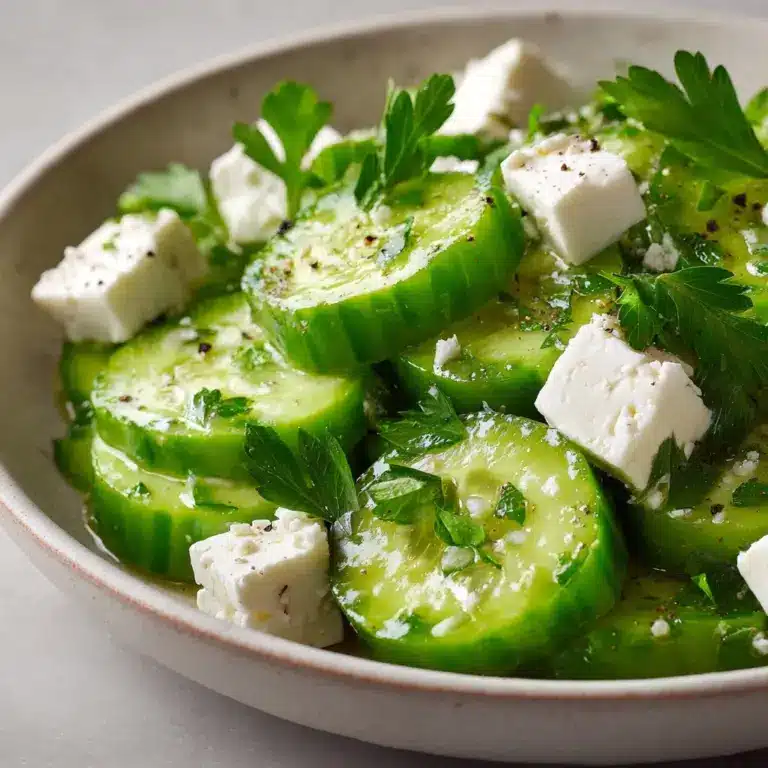Old-Fashioned, No-Knead English Muffins Recipe
There is something utterly charming and deeply satisfying about homemade English muffins, especially when made with a simple process that skips the fuss of kneading altogether. The Old-Fashioned, No-Knead English Muffins Recipe captures that rustic homemade essence with a tender crumb, a slightly tangy bite, and those beloved nooks and crannies that soak up butter and jam like little sponges. If you’ve ever wanted to make bakery-quality English muffins right in your kitchen without the backbreaking dough work, this recipe is your perfect, trusty companion.
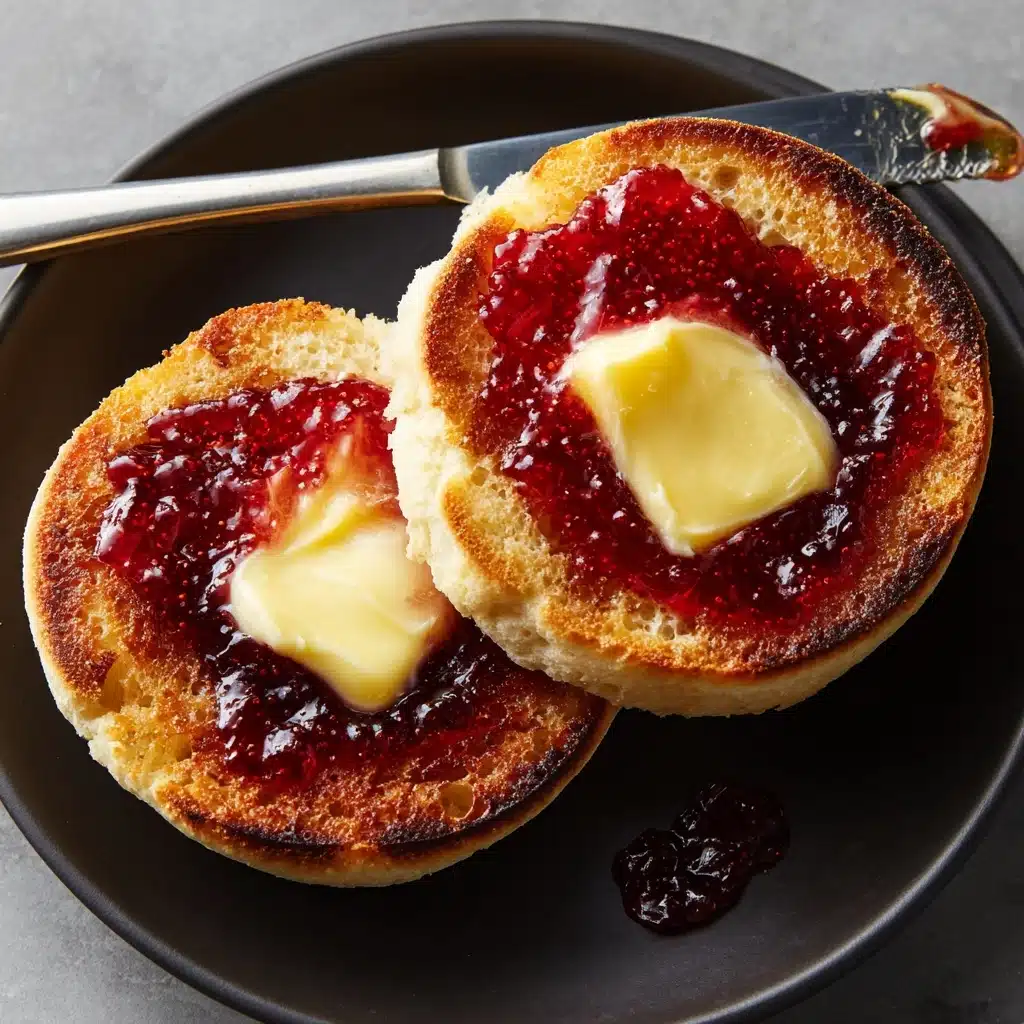
Ingredients You’ll Need
With just a handful of pantry staples, this recipe combines the right flours, sweetener, and dairy to create a soft, flavorful dough that rises beautifully without kneading. Each ingredient has a star role, shaping the taste, texture, and even the crust.
- Bread flour (10 ounces): Gives structure and chew for that signature muffin texture.
- Whole wheat flour (5 ounces): Adds a subtle nuttiness and wholesome depth, making the muffins heartier.
- Kosher salt (2 3/4 teaspoons): Balances flavor and controls yeast activity for the perfect rise.
- Instant dry yeast (1 1/4 teaspoons): The magic agent that makes the dough rise delightfully without needing kneading.
- Cold milk (12 ounces): Moisturizes and enriches the dough, contributing to tenderness and subtle sweetness.
- Honey (3 1/2 ounces): Natural sweetness that enhances browning and flavor complexity.
- Egg white (1 large): Adds lightness and improves the dough’s binding without heaviness.
- Fine cornmeal (5 ounces): Coats the muffins for that classic crunchy, textured bottom and helps prevent sticking.
- Bacon fat, unsalted butter, or oil (about 1 ounce): Used for griddling, it creates a beautiful golden crust with rich flavor.
How to Make Old-Fashioned, No-Knead English Muffins Recipe
Step 1: Make the Dough and Let It Rise
Begin by combining the bread flour, whole wheat flour, kosher salt, and instant dry yeast in a spacious mixing bowl. Stir them together until fully incorporated so the salt and yeast disperse evenly. Next, add the cold milk, honey, and cold egg white. Mix gently with a flexible spatula or wooden spoon until the batter is smooth and sticky, which usually takes about five minutes. Cover the bowl tightly with plastic wrap and let it rest at room temperature, ideally around 70°F (21°C), for four to five hours. You’ll know it’s ready when it has become spongy, light, and has more than doubled in size. This slow rise is the secret to developing flavor and that perfect texture, without needing to knead or punch the dough.
Step 2: Portion and Refrigerate for Second Rise
Once your dough has risen, prepare a rimmed baking sheet by generously coating it with fine cornmeal to prevent sticking and add texture. Using a large spoon or ice cream scoop, drop twelve generous spoonfuls of dough—about 2 2/3 ounces each—onto the cornmeal layer. Don’t worry about making them perfectly round; gentle pinches to neaten the shape are fine but no heavy handling is required. Sprinkle more cornmeal over the tops, cover with plastic wrap, and place the tray in the refrigerator for at least 12 hours, and up to 42 hours if your schedule demands it. This extended, cold second rise deepens the flavor and firms the dough for cooking.
Step 3: Griddle to Golden Perfection
When it’s time to cook, preheat a cast iron skillet, griddle, or electric griddle to around 325°F (160°C). Add half of your chosen fat—bacon fat, butter, or oil—and let it melt until it sizzles softly. Place as many muffins as you can comfortably cook without crowding and allow them to cook gently until the bottoms develop a rich golden-brown color, about eight minutes. Flip carefully using a square-end spatula and cook the other side just as long. Transfer cooked muffins to a wire rack to cool so the bottoms stay crisp. Once cool enough to handle, split each muffin by working your thumbs around the edge, coaxing apart those signature nooks and crannies. Toast before serving for the best experience.
How to Serve Old-Fashioned, No-Knead English Muffins Recipe
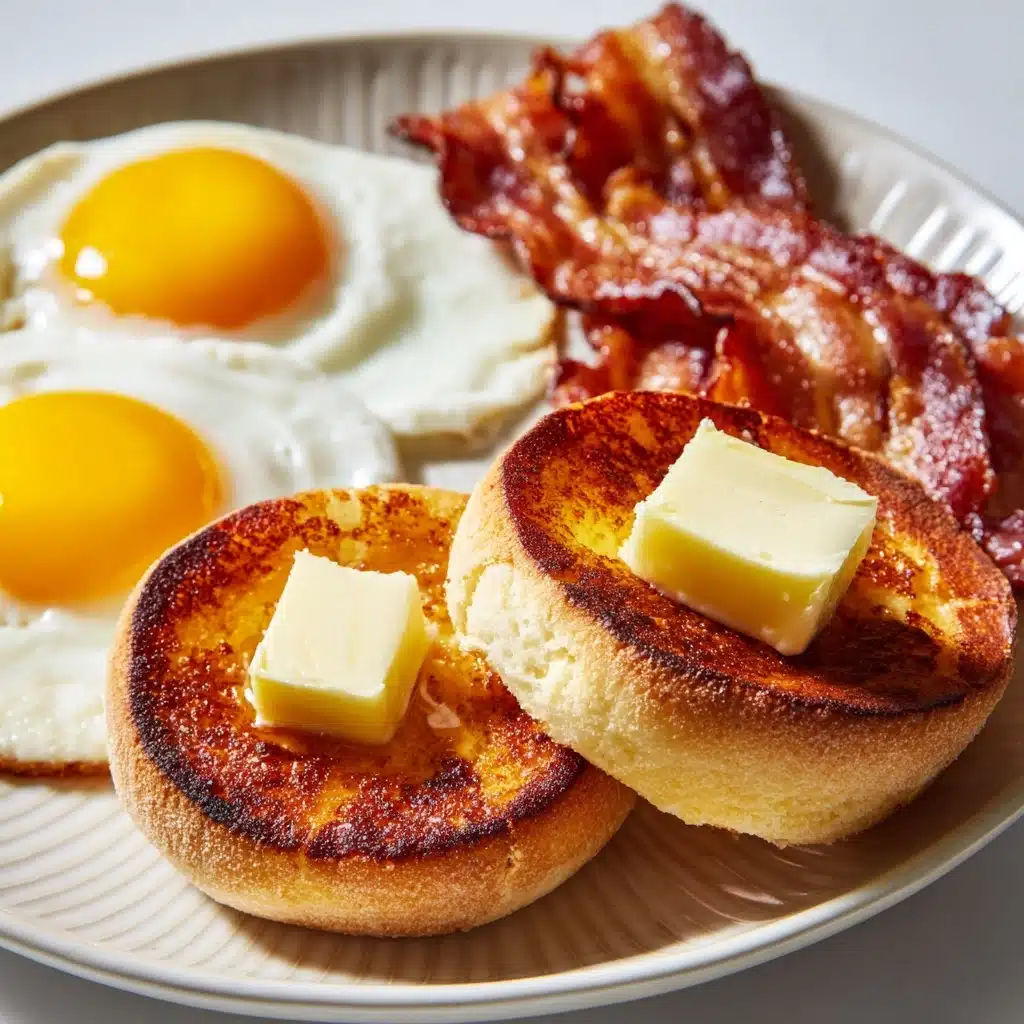
Garnishes
The real joy in these classic muffins is how beautifully they take on toppings. Spread a generous pat of salted butter and watch it melt into the craggy nooks, or drizzle with homemade jam, honey, or marmalade for a fresh burst of sweetness. For a savory twist, smear cream cheese or layer with avocado and smoked salmon, turning breakfast into a luxurious treat.
Side Dishes
English muffins shine alongside eggs any style—from scrambled to poached—and crispy bacon or sausage. They’re also fantastic companions to fresh fruit salads or a bowl of yogurt with granola, creating a balanced, hearty breakfast or brunch that feels both special and satisfying.
Creative Ways to Present
If you want to impress guests, slice the muffins thick, toast until golden, then top with savory spreads such as pesto and ricotta or sweet ricotta and sliced figs. You can also transform these muffins into mini sandwiches, layering deli meats and cheeses for a chic lunch option. The possibilities are endless with this delightfully versatile Old-Fashioned, No-Knead English Muffins Recipe.
Make Ahead and Storage
Storing Leftovers
Leftover English muffins keep beautifully in an airtight container on the countertop for up to one week. This makes them a reliable option for quick breakfasts or snacks throughout the week without losing their tender crumb or delicious flavor.
Freezing
If you want to make a big batch, these muffins freeze exceptionally well. Wrap each one tightly in plastic wrap or foil, then place in a freezer-safe bag. They will keep up to a month in the freezer. When you’re ready, just thaw overnight at room temperature or in the fridge, and they’ll be ready to toast.
Reheating
To bring your muffins back to life, split them and toast on a baking sheet or in a toaster until edges are crispy and interiors are warm. You can also reheat them on a griddle with a little butter for that fresh-cooked flavor and texture. Avoid microwaving as it tends to make the texture rubbery.
FAQs
Can I use all bread flour instead of mixing with whole wheat?
Absolutely! Using only bread flour will yield a lighter, more traditional English muffin, but you’ll miss out on the nutty flavor and slight chew that whole wheat adds. Feel free to adjust according to your preference.
What if I don’t have cornmeal for dusting?
Cornmeal is key for that crunch and to prevent sticking, but if you’re in a pinch, you can try semolina or just flour. Keep in mind that the texture will be less authentic.
How important is the cold second rise in the refrigerator?
This slow, cold fermentation really helps develop flavor and firms up the dough for cooking. If you’re short on time, a shorter rise is possible, but the muffins may be less flavorful and a bit harder to handle.
Can I make this recipe with plant-based milk?
Yes! Unsweetened almond, soy, or oat milk work fine. Just be sure to keep it cold to match the recipe’s fermentation timing and texture.
Why does this recipe not require kneading?
The higher hydration and long fermentation allow the dough’s gluten to develop gently on its own, giving it structure without the need for kneading. This makes the process much easier and faster without sacrificing quality.
Final Thoughts
I can’t recommend this Old-Fashioned, No-Knead English Muffins Recipe enough if you’ve ever dreamed of homemade muffins with minimal effort but maximum reward. The combination of slow fermentation, simple ingredients, and a hands-off approach creates muffins that taste like a warm, comforting hug from your own kitchen. Grab some butter, your favorite jam, and enjoy the homey magic you’ve just whipped up. Your mornings will never be the same!
PrintOld-Fashioned, No-Knead English Muffins Recipe
This Old-Fashioned, No-Knead English Muffins recipe yields soft, chewy, and delightfully nubby breakfast treats with minimal effort. Featuring a simple dough that requires no kneading and two rises—including an overnight rest in the refrigerator—these English muffins develop a rich flavor and perfect texture for toasting and topping with butter, jam, or your favorite spreads. Made with a blend of bread flour and whole wheat flour, sweetened with honey, and cooked on a griddle with a hint of butter or bacon fat, they bring a rustic homemade touch to your morning routine.
- Prep Time: 15 minutes
- Cook Time: 16 minutes (8 minutes per side per batch)
- Total Time: 4 hours 15 minutes to 47 hours 15 minutes (including two rises)
- Yield: 12 English muffins 1x
- Category: Breakfast & Brunch, Yeast Breads, Muffins
- Method: No-Knead Dough, Griddling
- Cuisine: American
- Diet: Halal
Ingredients
Dry Ingredients
- 10 ounces bread flour (2 cups; 285 g)
- 5 ounces whole wheat flour (1 cup; 140 g)
- 2 3/4 teaspoons (11 g) Diamond Crystal kosher salt (or equivalent weight table salt)
- 1 1/4 teaspoons (4 g) instant dry yeast (not rapid-rise)
- 5 ounces fine cornmeal (1 cup; 145 g), for dusting
Wet Ingredients
- 12 ounces cold milk (1 1/2 cups; 340 g), any percentage fat
- 3 1/2 ounces honey (1/4 cup; 100 g)
- 1 large egg white, cold
- Roughly 1 ounce bacon fat, unsalted butter, or oil (2 tablespoons; 30 g), for griddling
Instructions
- Make the Dough and Let Rise: In a large bowl, combine bread flour, whole wheat flour, kosher salt, and instant dry yeast until well mixed. Add cold milk, honey, and the cold egg white. Stir vigorously with a flexible spatula until the mixture is smooth and fully combined, about 5 minutes. Cover the bowl tightly with plastic wrap and set aside in a warm spot at around 70°F (21°C) to rise until the batter is spongy, light, and has more than doubled in volume, approximately 4 to 5 hours. The rising time can be adjusted to fit your schedule.
- Portion and Refrigerate for Second Rise: Generously dust a rimmed aluminum baking sheet with a thick, even layer of fine cornmeal. Using a large spoon, scoop out twelve approximately 2 2/3–ounce (75 g) portions of dough, dropping them onto the cornmeal. You may gently pinch the blobs to shape them tidily but it’s not necessary. Sprinkle additional cornmeal over the tops of the dough portions. Cover the baking sheet tightly with plastic wrap and refrigerate for at least 12 hours and up to 42 hours. This second rise develops flavor and texture.
- Preheat and Prepare to Griddle: About 10 minutes before cooking, preheat an electric griddle to 325°F (160°C) or warm a 12-inch cast iron skillet or griddle over medium-low heat until very hot. Add half of the butter, bacon fat, or oil to the pan and let it melt, coating the surface evenly.
- Cook the Muffins: Place six dough rounds on the hot griddle and cook without moving them until the bottoms are golden brown and crisp, about 8 minutes. Flip the muffins carefully using a square-end spatula and cook the other side for the same amount of time. Remove cooked muffins to a wire rack to cool slightly.
- Split and Serve: Once cool enough to handle, use your thumbs to work around the edges of each muffin, pulling gently to split them open and reveal the signature nooks and crannies. Toast the muffins before serving to enhance texture and flavor. Store any leftovers in an airtight container at room temperature for up to one week or refrigerate for up to one month.
Notes
- This recipe was developed using King Arthur’s bread flour and classic whole wheat flour. Due to variations in whole wheat flour types and milling practices, especially stone-ground versus white whole wheat, you might need to adjust milk amount slightly for the right hydration.
- If using stone-ground whole wheat flour, consider reducing the milk to as little as 10 ounces (1 1/4 cups; 285 g) for better dough consistency.
- Storing leftover English muffins in an airtight container keeps them fresh for up to 1 week at room temperature or 1 month refrigerated.
- For a richer skillet flavor, bacon fat can be used in place of butter or oil for griddling.
- Ensure the griddle temperature is medium-low to avoid burning and allow proper cooking inside the muffins.
Nutrition
- Serving Size: 1 English muffin
- Calories: 233
- Sugar: 8 g
- Sodium: 450 mg
- Fat: 4 g
- Saturated Fat: 1.5 g
- Unsaturated Fat: 2 g
- Trans Fat: 0 g
- Carbohydrates: 43 g
- Fiber: 3 g
- Protein: 7 g
- Cholesterol: 5 mg
Keywords: English muffins, no-knead bread, breakfast bread, homemade muffins, griddled bread, easy muffin recipe

